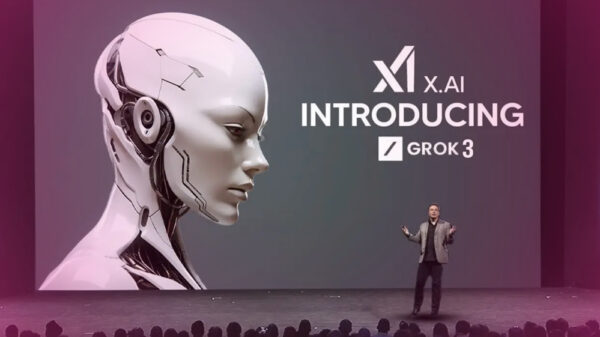In a recent panel discussion titled “Smarter Partnerships: Why SMEs are Key to Government’s AI Success,” important stakeholders, including the National Crime Agency (NCA), the Department for Science, Innovation and Technology’s Incubator for Artificial Intelligence (i.AI), and Zaizi—a specialized SME providing secure digital services—explored how small and medium-sized enterprises (SMEs) can bridge critical gaps in artificial intelligence (AI) strategy and implementation within public sector organizations.
The Agility of SMEs
During the discussion, Paul Edmonds, Chief AI Officer at the NCA, shared insights from previous experiences with large consultancies, which he described as “an utter disaster.” He explained, “When I was setting up my department, I took the traditional route and went to one of the big five consultancy firms. They had less knowledge of AI than my staff.” This experience prompted a shift in strategy towards leveraging SMEs that possess more specialized knowledge in AI technologies.
Edmonds stated, “We really had to reconfigure the way that we were working to get the kind of speed that we want.” His viewpoint was echoed by Chad Bond, Director of Strategy and Innovation at Zaizi, who highlighted that their rapid deployment approaches enable them to launch live services in just weeks, allowing for continuous iteration. This model is crucial for building ethical and explainable AI, as Bond emphasized the importance of trust in national security contexts: “Trust is non-negotiable in national security and other areas of government.”
Flexibility in Procurement
The introduction of new legislation, particularly from the Procurement Act, has allowed government organizations to adopt more flexible procurement processes. Michael Padfield, Head of Strategy at i.AI, noted, “We now have new powers from the Procurement Act that are available to us this year, which allow us to do what’s called Competitive Flexible Procedure and Dynamic Markets.” This new framework enables quicker procurement cycles, moving away from traditional methods that often involve extensive paperwork.
See also AI Technology Enhances Road Safety in U.S. Cities
AI Technology Enhances Road Safety in U.S. CitiesPadfield expressed his ambition for i.AI to pioneer the effective use of these new procurement powers, advising other departments to consider engaging with SMEs more dynamically. Edmonds further elaborated on how these changes allow for procurement cycles that can be completed in just two to three weeks, a timeframe that many traditional suppliers cannot accommodate.
Learning from International Examples
The panel discussion frequently referenced Ukraine as a notable example of effective SME involvement, particularly in a context requiring speed and flexibility. Bond pointed out that SMEs have been essential in providing infrastructure to the Ukrainian government amidst ongoing challenges. He remarked, “SMEs find new ways to deliver services quickly and securely—something that has been facilitated by flexible procurement processes in Ukraine.”
However, he also highlighted challenges within the UK, such as outdated systems that hinder collaboration both within government departments and with international partners. “You can’t build AI on creaky legacy systems,” he stressed. Padfield added that the structural barriers like manual processes limit the UK’s capacity to move towards a more digital-first approach, unlike countries such as Ukraine and Estonia, which have rapidly adopted modern systems.
Fostering Effective Partnerships
So, what constitutes an ideal partnership for AI implementation? Edmonds emphasized the need for rapid development and interaction between civil servants and partner staff. Padfield reinforced the importance of establishing a shared understanding of goals while remaining solution-agnostic. He noted that technical experts should be included in the dialogue to effectively navigate the complexities of AI capabilities.
Zaizi’s approach includes conducting “Transformation Day” workshops that gather diverse stakeholders to collaborate on defining requirements and business cases from the outset. Bond remarked, “As opposed to both those things being lobbed over the wall, which stifles innovation.” By centering design around user needs, organizations can foster trust and create a robust partnership essential for developing the right AI ecosystem.
Watch the full panel discussion: Smarter Partnerships: Why SMEs are Key to Government’s AI Success
For practical insights on integrating AI, check our white paper: Unlocking Government Efficiency – An AI Readiness Roadmap for Decision Makers.










































































